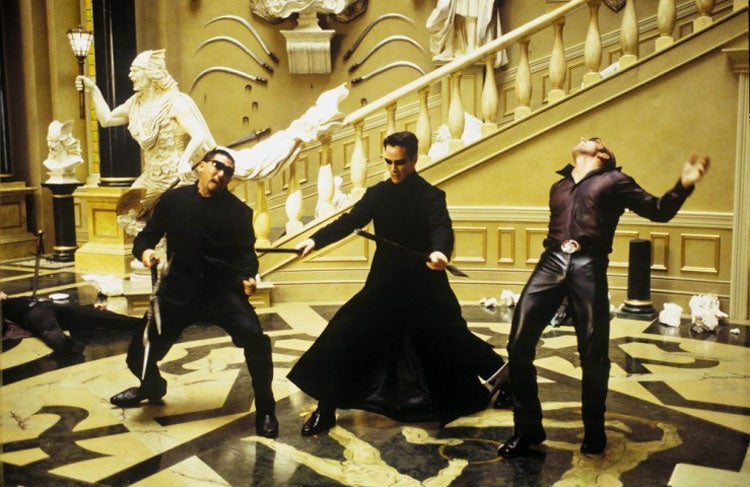Story of the Scene: 'The Matrix Reloaded' (2003)

Your support helps us to tell the story
From reproductive rights to climate change to Big Tech, The Independent is on the ground when the story is developing. Whether it's investigating the financials of Elon Musk's pro-Trump PAC or producing our latest documentary, 'The A Word', which shines a light on the American women fighting for reproductive rights, we know how important it is to parse out the facts from the messaging.
At such a critical moment in US history, we need reporters on the ground. Your donation allows us to keep sending journalists to speak to both sides of the story.
The Independent is trusted by Americans across the entire political spectrum. And unlike many other quality news outlets, we choose not to lock Americans out of our reporting and analysis with paywalls. We believe quality journalism should be available to everyone, paid for by those who can afford it.
Your support makes all the difference.One of the most lavish car-chases ever was designed by the Wachowski brothers for their sequel to The Matrix, The Matrix Reloaded.
The Wachowskis built, from scratch, and at a cost of $2.5m (£1.25m), a fake freeway on a disused naval base at Alameda in California. The mile-and-a-half road was fenced with a 19ft wall, made from timber and plywood, designed to look like concrete.
There are wraith-like dreadlocked entities wielding cut-throat razors and guns, robotic secret-service types spraying the speeding Cadillac with bullets as it weaves to avoid them, Carrie-Anne Moss delivering motorcycle acceleration way beyond human ability, cars rolling and cartwheeling, and good old Laurence Fishburne deploying some slick taekwondo moves and samurai-sword balletics on top of a speeding rig.
The sequence is especially beloved by Matrix nerds keen on the significance of various road- and truck-signs along the way, including logos referring to Gulliver's Travels, the oft-repeating numeral 101, and an exit signboard to Paterson Pass, allegedly a reference to production designer Owen Paterson.
General Motors donated more than a hundred cars for the scene, all of which were trashed. Intriguingly, many of the moments which look like CGI are not – when Agent Johnson spectacularly jumps onto the bonnet of a speeding car and crushes it, it is, in fact, a real-time stunt.
Join our commenting forum
Join thought-provoking conversations, follow other Independent readers and see their replies
Comments